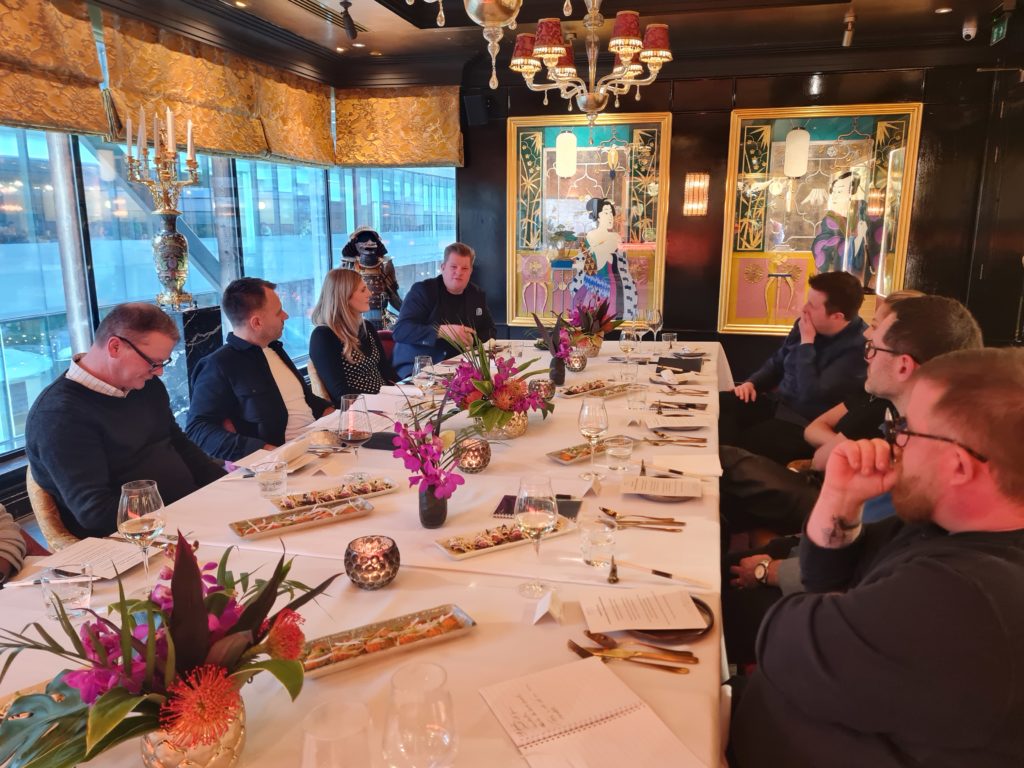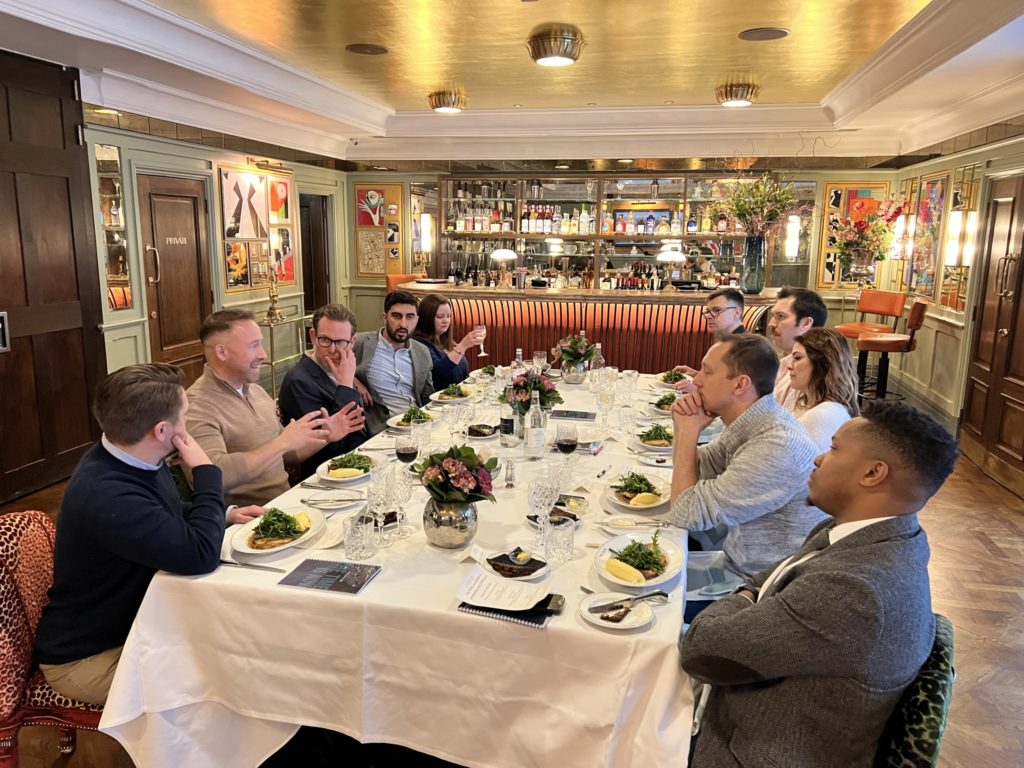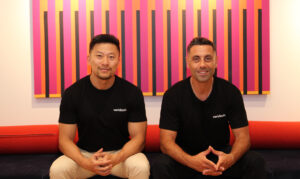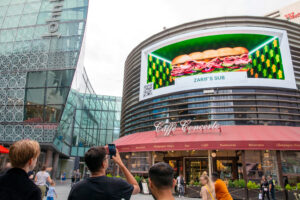JCDecaux and NDA recently invited industry experts from across the country to take part in a roundtable debate on the current state of programmatic Digital Out of Home (pDOOH) advertising, with two simultaneous discussions happening in Manchester and London.
Attendees at the Northern event included senior execs from agencies PHD, Crimtan, iProspect, Dentsu, Rommatic, Republic of Media, and Skyrise; while leaders from VCCP Media, dentsu, Mindshare, Zenith Media, Publicis, Wavemaker UK, and Matterkind gathered in London.
Our experts opened the conversations by identifying the various factors driving the growth of investment in pDOOH inventory.
In London, Jaspreet Mannan, Global Director of Programmatic, Zenith Global, pointed to the improved availability of pDOOH: “In 2023, it’s significantly easier to access programmatic outdoor inventory than before. A lot of buyers now want a single point of activation for all their media and many of the major platforms have done a great job in trying to simplify workflow. Similarly, outdoor media owners have worked hard to integrate with multiple SSPs, which is also contributing to the growth of investment.”
Robert Doel, Managing Partner, Wavemaker UK, added: “Now that pDOOH campaigns have started to win industry awards, more brand marketers are taking notice and getting onboard. We have entered a series of awards ourselves for programmatic outdoor campaigns and seen them achieve success for their use of data and efficiency to generate additional creative context. . We are seeing clients want to hear more about these activations, and understand how it can benefit their brand”
In Manchester, Gareth Owen, Director at Skyrise, said: “More people now have experience within the DOOH market. We’re seeing a lot of challenger brands investing in DOOH for the first time. Traditionally, they’ve spent an awful lot of money on performance digital so they’re excited to try something bigger with DOOH, something that delivers more reach and fame for the brand. There’s also more flexibility now in terms of how to access and buy programmatic DOOH inventory and the technology has evolved to make things like dynamic creative activations much easier to achieve.”
Martin Roberts of dentsu agreed that pDOOH is an attractive proposition for brands at the moment, but added that media agencies have to work on breaking down their own internal silos to fully exploit the channel’s potential: “The idea of bringing the flexibility and accountability of programmatic into a broadcast media space like DOOH is a compelling one. As an industry, we need to find a way of bringing our decades of OOH planning experience together with our Real Time Bidding expertise to see what is really possible with pDOOH, using real-world signals to trigger targeted, opportunistic activations.”
Roberts added: “That said, I think we need to be really careful not to start talking about DOOH as a performance media channel. We need to be realistic with clients about the sort of measurement we can deliver right now.”

Made to measure?
When asked to name the key challenges to the growth of pDOOH investment at the moment, both of our panels were in agreement that ‘measurement’ was the biggest issue for brand advertisers.
At the Manchester roundtable, Samantha Thornton, Business Director, Crimtan, said: “There’s still a lot of work to be done to make marketers aware of what is possible in the space, but the questions I’m asked continuously are around measurement. Brands have an expectation of OOH to deliver the same sort of traditional brand building impact as a TV campaign, but, at the same time, they want to be able to measure it from a digital perspective.
“We need to get better at explaining the role of pDOOH within an omnichannel strategy and keeping expectations around measurement in line with what’s realistic. Part of that will be pushing back when clients ask us to report on performance in silo. The onus is on us to start showing how outdoor works alongside activity in other channels.”
Dom Kozak, Head of Programmatic, JCDecaux agreed that measurement is a key concern of clients when approaching pDOOH for the first time: “Some research we did recently revealed that the increased measurement capabilities of pDOOH are the number one reason why brands are investing more in the channel. Measurement was also named as the number one barrier to entry and why people didn’t want to invest right now. That tells us, while it might not be easy, getting the measurement piece right will be incredibly powerful for the industry.”
On the question of whether brand marketers are aware of the full capabilities of pDOOH, Kozak commented: “I’ve worked in programmatic DOOH all day, every day for the past five years and, even then, I wouldn’t say I know all of its capabilities. Part of that is because it’s nascent and still evolving, as is the role of DSPs and data providers in the mix.”
Simon Watson, Head of Digital at Republic of Media, believes that digital outdoor needs to deliver more on the measurement front: “Out of home media is entering a digital media world so has to start playing by digital media rules, a fundamental part of which is third-party verification to measure delivery. It’s easy to see if your paper and paste OOH site is up, but in a digital world where panel choice is dictated by data and ads are in a rotation, third-party verification is a must. Contractors need to open their doors to it as their word doesn’t hold much water in a programmatic world.
“Another missing piece for me is the lack of understanding of incremental reach and the interaction pDOOH can have with other media. We know how TV and radio work together and how traditional TV and connected TV can support each other, but the impact of pDOOH on incremental reach is still a mystery that needs to be solved.”
At the London event, meanwhile, Andrew Horath, Head of Programmatic, Publicis, addressed the issue of whether pDOOH can truly claim to be a full-funnel channel. Again, measurement laid at the heart of the debate.
“Who is it we are trying to convince that plays pDOOH can play a role in the lower funnel and why?” asked Horath. “We’re asking marketers to take digital display budgets and put more into pDOOH, but that type of digital marketer has grown used to certain things, like the granularity and richness of data offered by Google Analytics, for example. That sort of platform can become really addictive for marketers, so there’s often a disconnect between the sort of measurement they expect from pDOOH and what we’re currently able to provide.”
Seun Odeneye, Managing Director of Matterkind, believes that the differences between pDOOH and other digital formats can be viewed as a positive, as pDOOH is capable of exciting programmatic media buyers in a way that other digital formats can’t.
He said: “When all you’ve ever known is the programmatic banner and the button, the opportunity to now play in this outdoor world, where we’re testing the boundaries of this new format and trying to create really meaningful moments, it’s amazing. The fact that it’s different from what we’re used to should be seen as an opportunity for pDOOH.”












